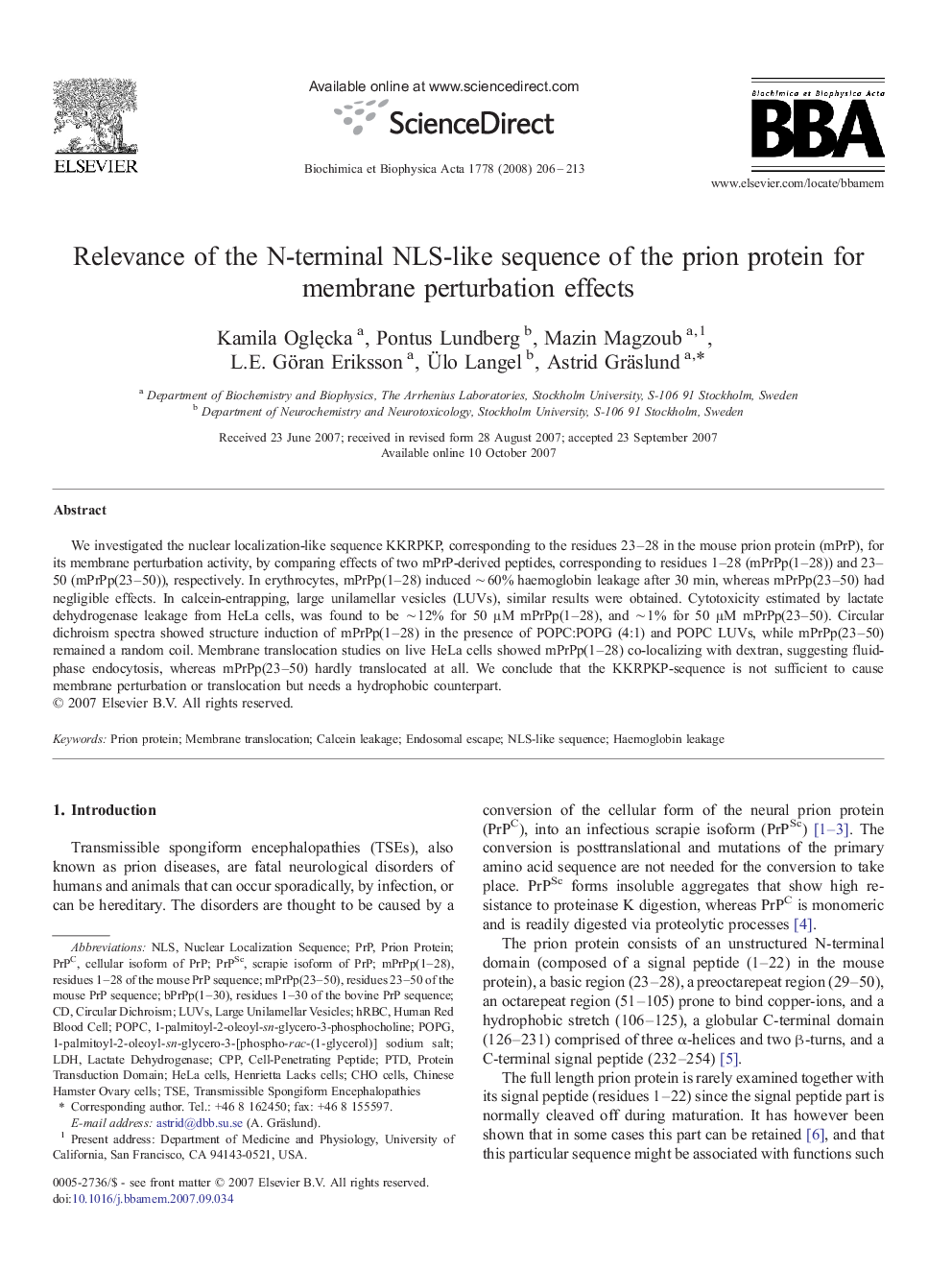| Article ID | Journal | Published Year | Pages | File Type |
|---|---|---|---|---|
| 1945560 | Biochimica et Biophysica Acta (BBA) - Biomembranes | 2008 | 8 Pages |
We investigated the nuclear localization-like sequence KKRPKP, corresponding to the residues 23–28 in the mouse prion protein (mPrP), for its membrane perturbation activity, by comparing effects of two mPrP-derived peptides, corresponding to residues 1–28 (mPrPp(1–28)) and 23–50 (mPrPp(23–50)), respectively. In erythrocytes, mPrPp(1–28) induced ∼ 60% haemoglobin leakage after 30 min, whereas mPrPp(23–50) had negligible effects. In calcein-entrapping, large unilamellar vesicles (LUVs), similar results were obtained. Cytotoxicity estimated by lactate dehydrogenase leakage from HeLa cells, was found to be ∼ 12% for 50 μM mPrPp(1–28), and ∼ 1% for 50 μM mPrPp(23–50). Circular dichroism spectra showed structure induction of mPrPp(1–28) in the presence of POPC:POPG (4:1) and POPC LUVs, while mPrPp(23–50) remained a random coil. Membrane translocation studies on live HeLa cells showed mPrPp(1–28) co-localizing with dextran, suggesting fluid-phase endocytosis, whereas mPrPp(23–50) hardly translocated at all. We conclude that the KKRPKP-sequence is not sufficient to cause membrane perturbation or translocation but needs a hydrophobic counterpart.
